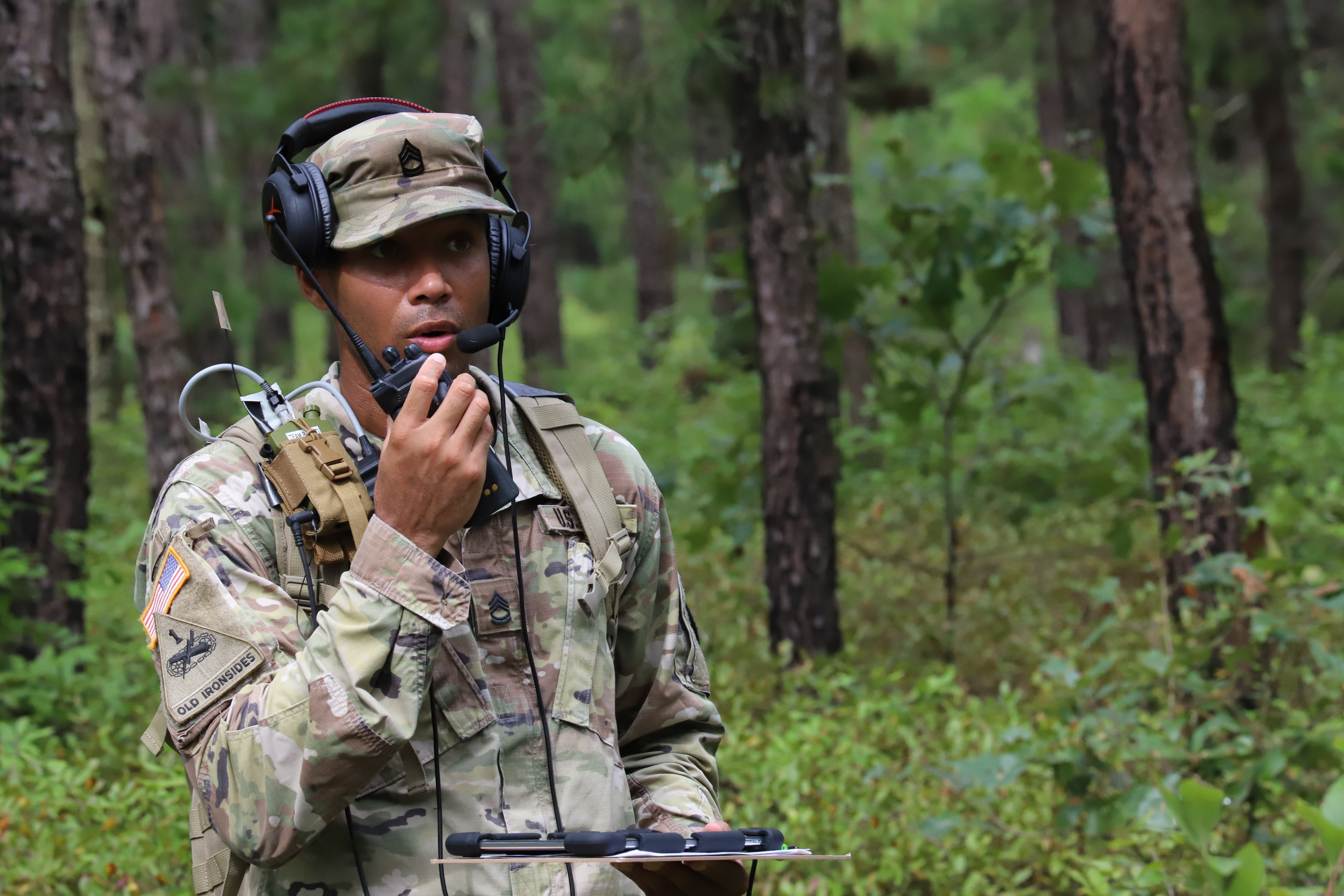NASHVILLE, Tn. — The Army’s Project Convergence 21 experiment at Yuma Proving Ground this fall provided the service’s network cross functional team director five main lessons, from the importance of a data fabric to to the need for a joint operational common picture, to inform future work.
Brig. Gen. Jeth Rey said during a presentation at the Army’s Technical Exchange Meeting here on Dec. 2 that the first takeaway was the need for a data fabric, which links disparate systems and technologies for a more seamless flow of information.
“There was no way that we could have achieved what we did at PC 21 with sensor to shooter without having a data fabric,” Rey said. “That’s why I told the team we have to push to get a data fabric earlier rather than later. I also explained that is also going to achieve” Joint All-Domain Command and Control.
Second, Rey said this year’s event saw a significant improvement in coverage from resilient wide-band satellite communications. The main difference this year was bandwidth virtualization through aggregated high capacity/low latency communications.
The experiment leveraged LEO and MEO capabilities while combining military and commercial SATCOM to move data on the battlefield.
While the bandwidth virtualization is at a low technology readiness level, Rey said the Army’s research and development community is working hard to mature it faster.
He said these SATCOM capabilities should be described as resilient rather than protected.
“I just didn’t want senior leadership to think that you put up a protected SATCOM and nothing was going to happen to it as far as jamming or any other capability that adversaries may have out there,” he said, adding that it is resilient.
These SATCOM technologies and concepts will greatly improve the Army’s communications options — what it refers to as its PACE plan, or primary, alternate, contingency and emergency — and help get the service to what leaders have described as a transport agnostic environment, Rey said.
The third lesson Rey gathered from Project Convergence is the importance of an aerial tier to the network to improve the resiliency and range.
“We did not realize how important it was to have an aerial tier overhead loitering for more than 20 to 26 hours and providing an extension of our network,” he said.
Going forward, he said he wants the Army to expand this capability to loiter to reach more than 48 hours. Rey noted this loitering capability would be undetected while in flight.
Additionally, Rey said they identified the need to help the Future Vertical Lift team achieve greater low probability of intercept/low probability of detection capability, from an aerial tier perspective.
The fourth key at Project Convergence for Rey was the way the edge mesh networking was extended at the experiment.
While Project Convergence was mainly focused at brigades and below, the Army is transitioning to a paradigm in which the division will be the primary unit of action. This means there will need to be greater capabilities above the brigade level.
Despite being focused on the brigade, when a variety of sensors and autonomous systems were introduced from the division, they stretched the network more than they expected, Rey said.
“At the same time, having the division not able to see everything that was happening from the BCT and below level, made us realize the division needs to have some level of capability when it comes to the [integrated tactical network],” he said.
Now, the Army is reevaluating how it can outfit the division with capabilities to support the integrated tactical network.
The fifth takeaway from Project Convergence was the need for a joint common operational picture. This year’s event included all of the services for the first time.
The Army has been building the Command Post Computing Environment, a web-enabled system that will consolidate current mission systems and programs into a single-user interface.
During Project Convergence, Rey said they were able to bring the Navy and Marine Corps into CPCE to provide a joint common operational picture.
Mark Pomerleau is a reporter for C4ISRNET, covering information warfare and cyberspace.








